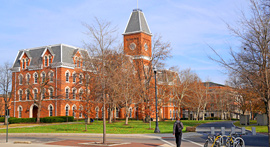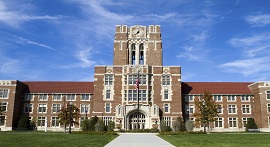Curator
A Day in the Life of a Curator
Curators (sometimes referred to as archivists in libraries) collect, exhibit, interpret, maintain, and protect objects of historical and aesthetic importance primarily in museums, libraries, and private collections. Curators are responsible for the safety and proper presentation of the works. “It’s all so fascinating and beautiful that you can find yourself touching history,” wrote one respondent. This sense of connection to the motion and beauty of history as expressed through objects is something nearly all the curators who responded mentioned. Almost none of them entered college with the expectation of becoming curators. The profession seemed to “just appear out of thin air.”Satisfaction and responsibility are usually high in this profession at all levels, with the exception of those curators who find that they are unable to spend enough time with the art they love because of their obligations to do publicity, fund-raising, and grant writing. Curators’ duties include creating exhibitions, acquiring works for the collection, meeting with and educating trustees, labeling exhibits, accurately and carefully keeping track of inventory, and, at times, overseeing research on collection pieces to make certain the integrity of the piece is maintained (such as dating tests for fossils or X-ray analysis of paintings to determine origin). “I’ve got a PhD, and I’m trying to find a good way to deal with termites,” said one curator. These varied and wide-ranging duties require someone with a mind attuned to details. Another facet of the curator’s job is educating the public about the objects and publicizing their existence. Most literature one receives 0r audio tracks one listens to at a museum were written by a curator. Grant writing is the third area of responsibility for most curators; much of this is done in consultation with collection managers and curatorial assistants. Curators should have excellent written communication skills. Managing a large staff, including interns and volunteers, is the most unexpected side of the profession. Many curators find the classification and preservation skills they know useless in coordinating the tasks of a full, dedicated staff. “You have to learn to delegate to people’s levels of competence,” mentioned one veteran curator, and others agreed. “Although you’re in charge,” said another, “you can’t do it alone.” Curators who can manage a staff and the details of their job are, for the most part, successful in and excited by their choice of career.Paying Your Dues
Both graduate education and practical experience are required for people who wish to become curators. Aside from an extensive knowledge of history and art, it is useful to have a basic understanding of chemistry, restoration techniques, museum studies, and even physics and public relations. Curators must have basic skills in aesthetic design, organizational behavior, business, fund-raising, and publicity. Many employers look favorably on foreign language skills as well. To become a collection manager or a curatorial assistant, a master’s degree is required. To become a curator at a national museum, a PhD is required, as is about five years of field experience. The market is competitive, and academic standards are very high. Useful graduate degrees include restoration science, curatorship, art history, history, chemistry, and business administration. Nearly all curators find it helpful to engage in continuing education. Research and publication in academic journals are important for advancement in the field.Present and Future
Curatorship arose from the needs of museums, libraries, and societies to maintain and preserve their collections while at the same time publicize them, encourage donations, and expose the public to their artifacts. Curatorship existed as early as 1750 in the United States but without any specific label until the early 1900s. The years 1950–1984 were strong years for museum growth and funding, but beginning in 1985 and continuing into the present, museums have been under severe financial pressure due to lack of government funding and general economic trends. People who are interested in becoming curators should note that during lean-funding years, the position involves much more grant writing, publicity, and fund-raising than it does collection maintenance and acquisition. Extra time spent at social functions to raise money can be significant. Funding decisions, however, are cyclical; what is true for the industry today may change within a very short period of time.Quality of Life
PRESENT AND FUTURE
FIVE YEARS OUT
TEN YEARS OUT
MAJORS
RELATED GRADUATE PROGRAMS
Featured MBA Programs For You
Are you seeking the right type of b-school? Connect with MBA programs seeking candidates like you.
Find Colleges Matched to Your Interests
Explore schools of all sizes, ranked colleges, city and big-campus schools and more.
Explore Graduate Programs For You
Connect with master’s programs around the country to get an edge over the competition.



